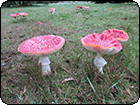 photo by splunge
photo by splunge
 photo by TheophileEscargot
photo by TheophileEscargot
 photo by Kronos_to_Earth
photo by Kronos_to_Earth
 photo by ethylene
photo by ethylene
Comment Feed:
♦ RSS
The collecting of ex-slave interviews did not begin with the Works Progress Administration. In 1929, Fisk University of Tennessee and Southern University of Louisiana sponsored field trips with the aim of bringing to light the memories of elderly African Americans who had experienced firsthand the final years of slavery. Five years later, Lawrence Reddick, a veteran of the Fisk project, submitted a proposal to the Federal Emergency Relief Administration that called for the hiring of black white-collar workers to undertake another round of collecting. This project resulted in the transcription of 250 interviews from Kentucky and Indiana.
Although not the first, the WPA's efforts were certainly the most concerted and the results the most voluminous.